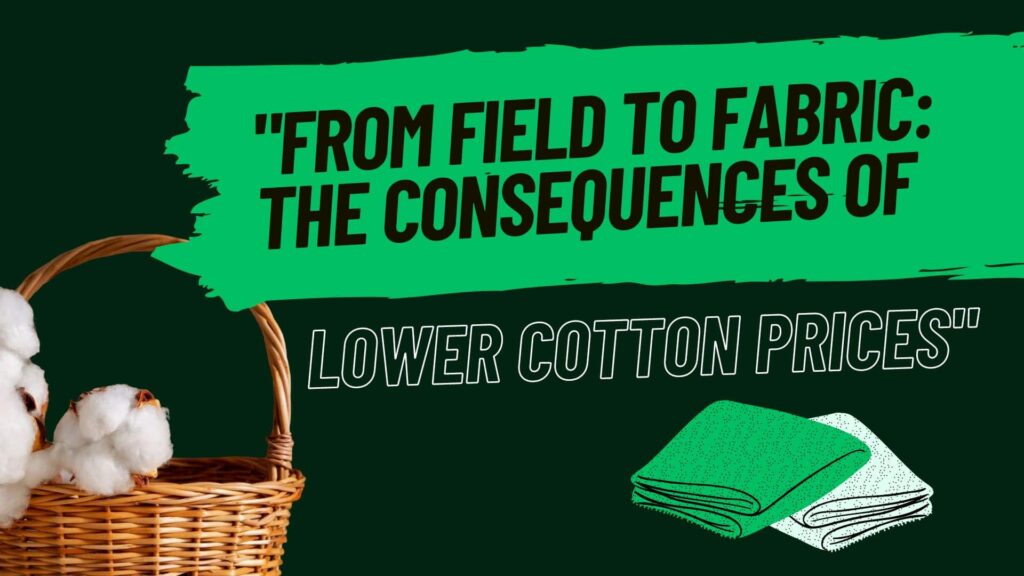The cotton industry is cyclical, often experiencing price fluctuations driven by weather, policies, and market demand. When cotton prices drop, significant repercussions affect the entire supply chain—from farmers and cotton mills to consumers. Understanding these effects provides a clearer picture of how lower cotton prices ripple through the industry.
Impact on Cotton Farmers
For cotton farmers, lower prices result in reduced income, challenging their financial stability. When prices fall below production costs, farmers struggle to cover essential expenses like seeds, labor, and irrigation. Consequently, in developing regions, this often leads to cost-cutting measures that compromise working conditions and wages. Moreover, lower income limits farmers’ access to education and healthcare for their families.
Effects on Cotton Ginning and Processing
Declining cotton prices also impact the ginning and processing sectors, where raw cotton is separated from its seeds. Specifically, reduced prices lead to lower margins for ginners and textile manufacturers, which affects their ability to invest in technology aimed at improving fiber quality. If farmers respond to low prices by planting less cotton, ginning facilities may process a diminished volume, potentially risking job losses for workers in the processing segment.
Textile Manufacturers and Retailers Benefit—But at a Cost
While textile and apparel industries can benefit from lower cotton prices—reducing production costs and enabling competitive pricing—this advantage comes with drawbacks. A prolonged period of low prices can trigger a “race to the bottom,” where companies prioritize cost-cutting over quality and sustainability. As a result, this leads to lower fabric durability and significant environmental impacts, as manufacturers may compromise on sustainable practices.
Challenges for Sustainability in the Cotton Supply Chain
Furthermore, lower prices create challenges for sustainable initiatives like organic farming or the Better Cotton Initiative (BCI). These programs typically incur higher production costs, making it difficult for farmers to adopt sustainable practices during low-price periods. Additionally, reduced profits across the supply chain discourage companies from investing in sustainability programs, thereby jeopardizing improvements in social and environmental conditions.
Influence on Global Cotton Trade
Lower cotton prices can also reshape global trade dynamics. For instance, countries heavily reliant on cotton exports, such as India and the U.S., may experience economic hardships. Conversely, importing countries like China may benefit from lower prices, which reduce manufacturing costs, potentially leading to social and economic disparities for local farmers.
Consumers and the End Market
For consumers, lower cotton prices translate to cheaper products; however, hidden costs may arise. Inexpensive cotton can compromise quality, as manufacturers often resort to using lower-grade fibers. Furthermore, the fast fashion trend exacerbates environmental issues like textile waste and pollution, as cheaper prices encourage increased purchasing and shorter lifecycles for cotton products.
Navigating the Complexities of Price Fluctuations
Addressing lower cotton prices requires a comprehensive approach involving all supply chain stakeholders.
1. Support for Farmers
For example, government subsidies and sustainable farming incentives can help shield farmers from price drops.
2. Sustainable Sourcing Initiatives
Moreover, brands should commit to sourcing sustainably produced cotton, even during low-price periods. Sustainable cotton mills for eco-friendly fabrics can play a crucial role in this effort.
3. Consumer Awareness and Demand
Finally, educating consumers about the true costs of cheap cotton can shift demand toward ethically produced textiles, thereby encouraging sustainable practices throughout the supply chain.
In summary, the consequences of lower cotton prices extend beyond farmers and cotton mills, impacting every stage from field to fabric. While certain sectors may benefit, the overall impact encompasses both social and environmental risks. Therefore, proactive steps to address these challenges can help create a more balanced, resilient, and sustainable future for the cotton industry.

